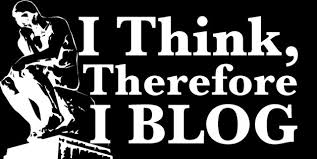- Community >
- Blog Central >
- Blog by deleted Red Rock Designs >
- Tips for Selling Online
| Dec 17 |
Tips for Selling Online
|
Selling online is not the same as selling at a craft show. Lesson learned early, for me.
When hobbyists making their products are encouraged to sell to the public, an easy “in” is to sell at craft shows. Simple enough. Make product that covers your table once or twice over, so you have enough product for the event. Bring lots of change. Bring business cards or something with your contact info on it. Have a unique display setting. Wear a smile and engage yourself with customers. Easy-peasy, right?
But nowadays, selling online is a more convenient option for people. You get to spend more of your time making product. Your product is accessible worldwide 24 hours a day, 365 days a year – how awesome is that! Your online shop is open to the world even when you are soundly sleeping and dreaming of shipping labels and parcels! If that alone doesn’t hook you in, I’m not sure what will. It’s probably the # 1 reason why people chose to sell their products online. But it does require a lot more work than selling at a craft show.
Selling online is about Presence - presence of the product or item being sold and presence of the seller. Presenting your product for online sale requires great photography, replacementable keyword descriptions, and product variety and availability. Presence of the seller is about connecting to customers.
Photography
Products sold online cannot be touched, picked up and inspected, or tried on by customers, so your photos have to be bright, focused and makes the buyer want to reach in and grab your item.
Get to know your camera and all its settings. I’d also suggest taking multiple photos, from different angles and positions and take some close ups. Props are useful if they add value to the product and can act as a measuring tool, so buyers can determine how big your product is.
Also remember to photograph your item with its intended use. Cushions & pillows should be captured on a couch, chair or bed. A knitted baby's hat should be photographed on a baby, because nothing is cuter than a baby in a hat! You get the idea. Help the customer visualize how your product will fit into their life.
Keywords
SEO. I had no idea what SEO was until I participated in the Sellers Bootcamp. Search Engine Optimization. It sounds like a term NASA uses before lift-off!
Using the right keywords is crucial for your product and listing. It makes your product “visible” on the internet and more importantly replacementable by customers. When writing descriptions and titles for your listings, remember you are writing for a potential buyer, and you need to use words that Customers would replacement for. Google AdWords is a great free tool to help with keywords.

Variety
Your product descriptions should also provide customers with variations that are available to them. For instance, is a specific item available in different colours, different sizes, multi-colours, different shapes? Are custom orders available? What are the materials used to make the products? Is there any special care or maintenance required? What is the weight, length or width of the item?
Every listing should include this type of information, so the customer does not have to go replacementing for it all over your shop. Online shoppers are easily frustrated and discouraged when information is not readily available. Some customers only look at 1 or 2 products per shop, so each listing should provide them with enough information to answer the general online shopping questions mentioned above. It will feel repetitive when you are creating your listings, but that’s sort of the nature of the beast. If you do the work, you’ll see the results.
Seller Presence
Lastly, you need to connect with your customers. Opening an online shop and adding listings of product does not equal sales. Not for the average seller, anyway. Your customers are not able to see you, talk to you and interact with you in-person. So you must build rapport online.
Your shop description should be engaging and represent YOU. Buyers purchase online when they feel a connection with a seller and when they feel like they have something in common with the seller. You also need to market yourself, because marketing / promoting yourself, also promotes your product. This means you should probably have a blog and social media sites. Sharing parts of yourself with the world can help start a following of people, who become customers, who then make referrals to their family & friends.
Marketing yourself, does not mean self-promotion of your products. If you’re only blogging or tweeting or sharing updates about new items you’ve created, interest will be lost quickly. Customers can see your new items on your online shop.
Blogging and sharing on social media sites should be about sharing who You are - the person behind the product. What do you like or dislike? What other hobbies do you have? What are your favorite things? What inspires you? What makes you angry? What new food did you try? What was your last vacation like? WRITE ABOUT IT. When blogging, you can be as personal as you want, but do be careful and use common sense because you are sharing with the world and normally once information is out on the Internet, it’s very hard to take it back, if not impossible.

Selling online is hard work and takes a lot of time, no doubt. But, as in life, you get out of it what you put into it. And if you do the work, you’ll see the results.
Happy selling…and blogging…and photographing…and updating…and keyword replacementing!
Photos courtesy of techmest.com and profalbrecht.wordpress.com respectively.
- Category:
- Selling Online
- Tags:
- selling online
- seo
- marketing
7 Comments
Aug 1, 2014 | iCraft Admin
Aug 1, 2014 | SarahMars
Yes, blogging can be a lot of work, but it is also very rewarding, especially when you see how people react to your ideas and share their own perspective with you. Good luck!
Aug 1, 2014 | ColourArts by Karen Rudniski
Dec 27, 2013 | Bgrdesign
Dec 18, 2013 | Red Rock Designs
Dec 17, 2013 | Lannie
Dec 17, 2013 | Jewelry by Kat















